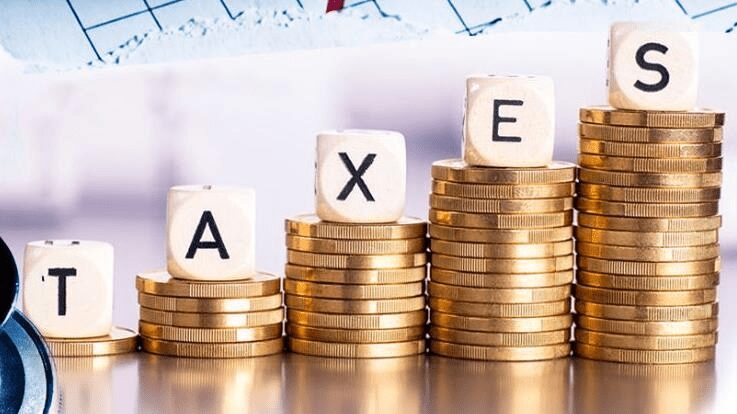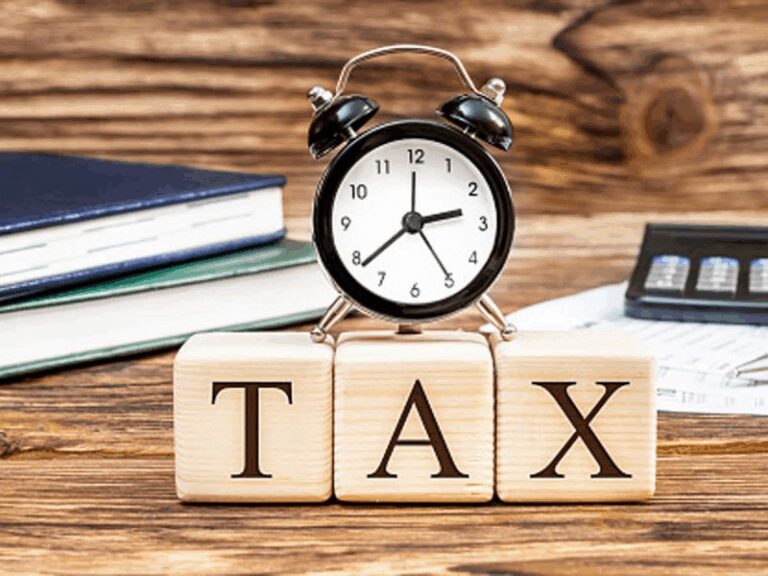How To Calculate Consumer Price Index- Simplified In 2025
Table of Contents
How to Calculate Consumer Price Index (CPI)- Complete Guide

This guide primariily focuses on the topic namely “How to calculate consumer price index”. The Consumer Price Index (CPI) is one of the most important economic indicators used to measure inflation and changes in the cost of living. It reflects the average change in prices over time that consumers pay for a basket of goods and services, such as food, housing, transportation, healthcare, and education. Calculating CPI involves tracking how the prices of these items vary across different time periods.
Step-by-Step Guide: How CPI is Calculated
The Consumer Price Index (CPI) measures the average change in prices paid by consumers over time for a standardized basket of goods and services. Here’s a breakdown of how the CPI is methodically calculated by the Bureau of Labor Statistics (BLS):
Step 1: Establish the Market Basket
The first step is to define a “market basket” of goods and services that reflects the typical spending habits of urban consumers. This basket includes:
- Food and beverages (e.g., groceries, dining out)
- Housing (e.g., rent, utilities, furnishings)
- Apparel (e.g., clothing and footwear)
- Transportation (e.g., gasoline, vehicle purchases, public transit)
- Medical care (e.g., insurance, prescriptions, doctor visits)
- Education and communication (e.g., tuition, cell phone service)
- Recreation (e.g., sporting goods, entertainment)
- Other goods and services (e.g., personal care, insurance)
The contents of the basket are determined using data from the Consumer Expenditure Survey, which tracks real consumer spending patterns.
Step 2: Collect Current Prices Data
The Bureau of Labor Statistics (BLS) gathers price data on the selected items from thousands of retail outlets, service providers, landlords, and utility companies in urban areas. Prices are collected monthly across the U.S.
The BLS collects monthly price data from approximately 23,000 retail and service establishments in 75 urban areas across the U.S. Additionally, rent data is gathered from about 50,000 landlords and tenants.
Prices are collected for exact items (e.g., a specific brand and size of cereal), to ensure accurate tracking over time. If an item is no longer available, the BLS uses statistical methods to adjust for quality or substitute differences.
Example:
- In January 2023, a gallon of milk costs $3.50
- In January 2024, the same gallon costs $3.85
Step 3: Calculate the Cost of the Basket
Next, the total cost of the market basket in the base year is calculated. This serves as the benchmark against which future prices will be compared. The base year is assigned a CPI value of 100 by definition.
Once prices are collected, the next step is to calculate the total cost of the market basket in both the base year and the current year.
Example
Assume the market basket includes:
- 10 gallons of milk
- 5 pounds of chicken
- 2 haircuts
- 1 month of rent
If in the base year, the total cost was $500, and in the current year it is $530, this increase reflects inflation.
Step 4: Calculate the Cost of the Basket in the Current Year
Now, using the latest collected prices, the BLS calculates the total cost of purchasing the same basket in the current year.
For example:
If the same basket in 2024 now costs $550, this indicates a price increase over the base year.
Step 5: Use the CPI Formula
The formula for the Consumer Price Index is:
CPI = (Cost of Basket in Current Year ) × 100
(Cost of Basket in Base Year)
Using the example:
CPI= (530 / 500) × 100 = 106
This means prices have increased by 6% since the base year.
Step 6: Calculate Inflation Rate (Optional but Common)
To determine the rate of inflation between two periods using CPI:
Inflation Rate = ( CPI in Current Year − CPI in Previous Year ) ×100
(CPI in Previous Year)
If:
- CPI in 2023 = 106
- CPI in 2022 = 102
Then:
Inflation Rate = (106−102) ×100 = 3.92%
102
Summary Table
| Step | Description |
| Step 1 | Define a fixed market basket of goods and services |
| Step 2 | Collect monthly price data from stores and landlords |
| Step 3 | Calculate total cost of the basket in the base year |
| Step 4 | Calculate cost of the same basket in the current year |
| Step 5 | Use CPI formula to calculate index value |
| Step 6 | (Optional) Compute inflation rate using year-over-year CPI change |
CPI Calculation Example in Real Life
Let’s walk through a simplified CPI example:
| Item | Quantity | Price in Base Year | Price in Current Year |
| Bread | 10 loaves | $1.50 | $1.80 |
| Milk | 5 gallons | $3.00 | $3.40 |
| Gasoline | 20 gallons | $2.50 | $3.20 |
Base Year Basket Cost:
(10 × $1.50) + (5 × $3.00) + (20 × $2.50) = $15 + $15 + $50 = $80
Current Year Basket Cost:
(10 × $1.80) + (5 × $3.40) + (20 × $3.20) = $18 + $17 + $64 = $99
CPI:
(99 / 80)×100=123.75
This CPI value of 123.75 means that prices have risen 23.75% since the base year.
Who Calculates the CPI?
In the United States, the Consumer Price Index (CPI) is calculated and published by the Bureau of Labor Statistics (BLS), which is a division of the U.S. Department of Labor. The BLS is responsible for collecting, analyzing, and reporting economic data that helps measure labor market activity, inflation, and productivity. To compile the CPI, the BLS conducts monthly price surveys across thousands of retail stores, service providers, rental units, and medical facilities in over 75 urban areas nationwide.
They gather data on the prices of a fixed “market basket” of goods and services typically purchased by urban consumers. The BLS then compares the current cost of this basket to the cost in a designated base year, using statistical models to ensure accuracy and consistency. This comprehensive and standardized process makes the CPI one of the most trusted indicators for measuring inflation, setting cost-of-living adjustments (COLAs), influencing monetary policy, and adjusting federal benefits like Social Security.
Why Is CPI Important?
The Consumer Price Index (CPI) is a vital economic indicator because it measures the average change in prices paid by urban consumers for a standardized basket of goods and services over time. This seemingly simple measurement has far-reaching implications across multiple sectors of the economy:
1. Measuring Inflation
CPI is the most commonly used tool for tracking inflation—the general increase in prices that erodes purchasing power. A rising CPI indicates inflation, while a declining CPI can suggest deflation. Policymakers, economists, and businesses use CPI data to monitor price stability in the economy.
2. Adjusting Income and Benefits (COLAs)
CPI plays a central role in cost-of-living adjustments (COLAs) for millions of Americans. Social Security payments, federal pensions, veterans’ benefits, and some private contracts (like union wages or rental agreements) are indexed to the CPI to maintain real income as prices rise.
3. Influencing Monetary Policy
The Federal Reserve uses CPI data to guide its monetary policy decisions, including setting interest rates. If CPI data shows inflation is rising rapidly, the Fed may increase rates to cool the economy. Conversely, a low CPI might lead to lower interest rates to stimulate growth.
4. Benchmark for Taxation and Wages
The IRS uses the CPI to adjust tax brackets, standard deductions, and retirement contribution limits each year to prevent “bracket creep,” where inflation pushes taxpayers into higher brackets despite no real increase in income. Employers and unions also use CPI to negotiate fair wage increases that keep pace with inflation.
5. Guiding Business Decisions
Businesses use CPI trends to make informed decisions about pricing, inventory, contracts, and wage structures. Understanding inflationary pressures helps companies protect profit margins and plan for the future.
6. Economic Forecasting and Research
CPI data serves as a foundation for economic analysis, forecasting, and academic research. Economists analyze CPI trends to predict consumer behavior, model economic growth, and assess the overall health of the economy.
In essence, CPI isn’t just a number—it’s a powerful signal that affects everything from your grocery bill and savings account to national policy decisions and global markets. Whether you’re a consumer, business owner, policymaker, or investor, the CPI provides critical insight into how the economy is evolving and how to respond to it.
Summary: Key Points About CPI Calculation
| Component | Explanation |
| Fixed Basket | Goods/services consumers typically buy |
| Price Collection | Monthly, from thousands of retail outlets nationwide |
| Base Year | A reference year used to compare price changes |
| CPI Formula | (Current Basket Cost / Base Year Cost) × 100 |
| Used By | BLS, Federal Reserve, policymakers, Social Security |
Frequently Asked Questions (FAQs) on Consumer Price Index (CPI)
What is the Consumer Price Index (CPI)?
The Consumer Price Index (CPI) is a statistical measure that tracks the average change over time in the prices paid by urban consumers for a fixed basket of goods and services. It is commonly used to assess inflation, cost-of-living changes, and purchasing power.
Who calculates the CPI in the U.S.?
The Bureau of Labor Statistics (BLS), part of the U.S. Department of Labor, is responsible for calculating and publishing the CPI on a monthly basis. It uses extensive price surveys and expenditure data to ensure accuracy.
How often is CPI calculated and released?
CPI is calculated monthly and typically released around the second week of each month by the Bureau of Labor Statistics. Each release reflects price data from the previous month.
What is included in the CPI market basket?
The CPI market basket includes eight major categories:
- Food and beverages
- Housing
- Apparel
- Transportation
- Medical care
- Recreation
- Education and communication
- Other goods and services (e.g., personal care)
What is the base year in CPI calculation?
The base year is the reference year against which current prices are compared. In the base year, the CPI is always set at 100. Changes in CPI are measured relative to this baseline.
How is the inflation rate calculated using CPI?
The inflation rate is calculated as:
Inflation Rate=(CPI in Current Year − CPI in Previous Year / CPI in Previous Year) × 100
This shows how much prices have increased or decreased over a specific time period.
Why does CPI matter to consumers?
CPI affects everything from Social Security payments and income tax brackets to wages and rent adjustments. It shows whether the cost of living is rising or falling and helps consumers understand their purchasing power over time.
Is CPI the same as cost of living?
Not exactly. While CPI is often used as a proxy for the cost of living, it does not account for changes in living standards, regional differences, or substitution of goods when prices change. It’s a close approximation but not a full representation of cost-of-living changes.
What are the types of CPI?
There are two main types in the U.S.:
- CPI-U: For all urban consumers (covers ~93% of U.S. population)
- CPI-W: For urban wage earners and clerical workers (used for COLA adjustments in Social Security)
Can CPI affect my taxes?
Yes. The IRS adjusts income tax brackets, standard deductions, and contribution limits for retirement accounts each year based on changes in CPI to avoid inflation-related bracket creep.
Is CPI used globally?
Yes, most countries calculate some version of CPI to monitor inflation. However, the methodology and basket contents vary by country depending on consumer habits and economic structures.







